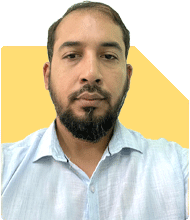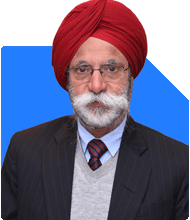I am 46 years old want to invest in MF sip 50000 monthly. Please suggest
Ans: At 46, planning to invest Rs 50,000 per month in a Mutual Fund Systematic Investment Plan (SIP) is a solid strategy to build wealth over time. Mutual funds offer the advantage of flexibility, professional management, and diversification, which are crucial as you prepare for long-term financial goals like retirement, your children’s education, or simply wealth creation.
Let’s explore how you can structure your investment plan in detail to make the most of your Rs 50,000 SIP.
Consider Your Financial Goals
To begin with, it’s important to align your mutual fund investments with your financial goals. At 46, your key financial objectives might include:
Retirement Planning: You might aim to build a corpus for a comfortable post-retirement lifestyle.
Children’s Education or Marriage: If you have children, their future educational or marriage-related expenses might be on your radar.
Wealth Creation: You might want to accumulate a sizable wealth corpus over the next 10-15 years for personal or business use.
Clearly defining these goals will help you choose the right types of funds that suit your timeline and risk tolerance.
Asset Allocation: A Balanced Approach for Your Age
A well-thought-out asset allocation between equity and debt mutual funds will ensure your investments grow steadily while managing risk. For someone at 46, a good balance would be:
70% in Equity Mutual Funds: Equity funds are crucial for long-term growth. They provide inflation-beating returns over time.
30% in Debt Mutual Funds: Debt funds offer lower risk and provide steady income, which adds stability to your portfolio.
This allocation strikes a balance between risk and reward, which is especially important as you approach retirement age.
Equity Mutual Funds for Growth
Equity funds will form the backbone of your investment portfolio. However, within equity mutual funds, diversification is key. You can consider the following categories:
Large-Cap Funds: These funds invest in large, established companies. Large-cap funds provide stability and moderate growth with relatively lower risk. They should form the core of your equity allocation.
Mid-Cap Funds: These funds invest in mid-sized companies, which have higher growth potential compared to large-cap stocks. However, they are slightly riskier. Including mid-cap funds in your portfolio can help boost your returns.
Small-Cap Funds: Small-cap funds invest in smaller companies, which offer high growth potential but come with higher volatility. Allocating a smaller portion of your equity investment to small-cap funds can enhance returns over the long term.
Flexi-Cap Funds: These funds allow the fund manager to invest across large, mid, and small-cap stocks. Flexi-cap funds provide diversification and flexibility, making them a good option for long-term wealth creation.
Why Actively Managed Funds Over Index Funds?
While index funds are often touted for their low cost, actively managed funds have distinct advantages, especially for investors looking for higher returns. Here’s why you should consider actively managed funds:
Higher Return Potential: Active fund managers can handpick stocks and sectors that have the potential to outperform the broader market. Index funds, on the other hand, merely mirror the market.
Risk Management: Actively managed funds offer the flexibility to adjust holdings based on market conditions. This can provide better downside protection compared to index funds, which are tied to market performance regardless of conditions.
Debt Mutual Funds for Stability
Debt funds provide the stability you need in your portfolio, ensuring that even in times of market downturns, a portion of your investments remains safe. Here’s what you can consider:
Short-Term Debt Funds: These funds are less volatile and provide consistent returns over short to medium terms. They are a good option for parking funds that you may need in the next 2-5 years.
Dynamic Bond Funds: These funds adjust the portfolio duration based on interest rate movements, which can help in generating better returns when interest rates are falling.
Corporate Bond Funds: Corporate bond funds invest in high-rated corporate debt and offer higher returns than government securities while maintaining a lower risk profile.
SIPs: The Power of Consistent Investment
SIPs are a great way to invest regularly without worrying about market timing. Here’s why:
Rupee Cost Averaging: By investing a fixed amount regularly, you automatically buy more units when the market is low and fewer units when the market is high. This averages out your purchase cost.
Disciplined Investment: Investing Rs 50,000 every month ensures you stay committed to your financial goals. It removes the temptation of trying to time the market, which can often result in poor decisions.
Compounding Benefits: Over time, your investments can grow exponentially due to compounding. The earlier you start, the better the results in the long run.
Direct vs Regular Plans: Why Regular Plans Through a CFP Are Better
Direct plans may seem appealing due to their lower expense ratios, but for most investors, especially those looking for personalised advice, regular plans managed through a Certified Financial Planner (CFP) offer better value. Here’s why:
Professional Management: A CFP helps you select the right funds based on your risk profile and goals. Direct plans leave you to manage your investments on your own, which can be challenging without the right expertise.
Regular Monitoring: Market conditions and personal circumstances change over time. A CFP will review and rebalance your portfolio regularly to ensure it remains aligned with your goals. In direct plans, you have to do this on your own.
Rebalancing: Over time, your asset allocation may need adjustment as you get closer to your financial goals. A CFP can help rebalance your portfolio, shifting from riskier assets like equity to safer assets like debt when required.
The Importance of Portfolio Reviews
Even after setting up a robust SIP, reviewing your portfolio regularly is crucial. Here’s why:
Market Adjustments: Market conditions can change drastically over time. A review allows you to make necessary adjustments to safeguard your investments.
Goal Realignment: Your financial goals may evolve with time. Regular portfolio reviews ensure that your investments continue to align with your changing needs.
Asset Rebalancing: As you grow older, you may want to shift towards more stable, lower-risk investments. A periodic review helps in adjusting your asset allocation accordingly.
Tax Planning for Mutual Funds
With the recent tax changes, it’s important to plan your investments carefully to minimise tax liability:
Holding Period: For equity funds, aim to hold your investments for more than a year to qualify for long-term capital gains tax, which is lower than short-term capital gains tax.
Debt Fund Taxation: With the removal of indexation, debt funds are now less tax-efficient. You may want to explore other low-risk investment options, such as fixed deposits, for short-term needs if tax efficiency is your priority.
Final Insights: Building a Strong Financial Future
Investing Rs 50,000 monthly in a SIP is a powerful way to build wealth over time. Here's a recap of the key takeaways:
Allocate 70% of your portfolio to equity funds and 30% to debt funds.
Focus on actively managed funds for higher return potential and better downside protection.
Use SIPs to take advantage of rupee cost averaging and disciplined investing.
Be aware of the new tax rules on debt funds and plan your investments accordingly.
Regular portfolio reviews with a Certified Financial Planner will help you stay on track with your financial goals.
By following this structured approach, you can build a balanced and growth-oriented portfolio that aligns with your financial goals, providing security and stability for your future.
Best Regards,
K. Ramalingam, MBA, CFP,
Chief Financial Planner,
www.holisticinvestment.in




























